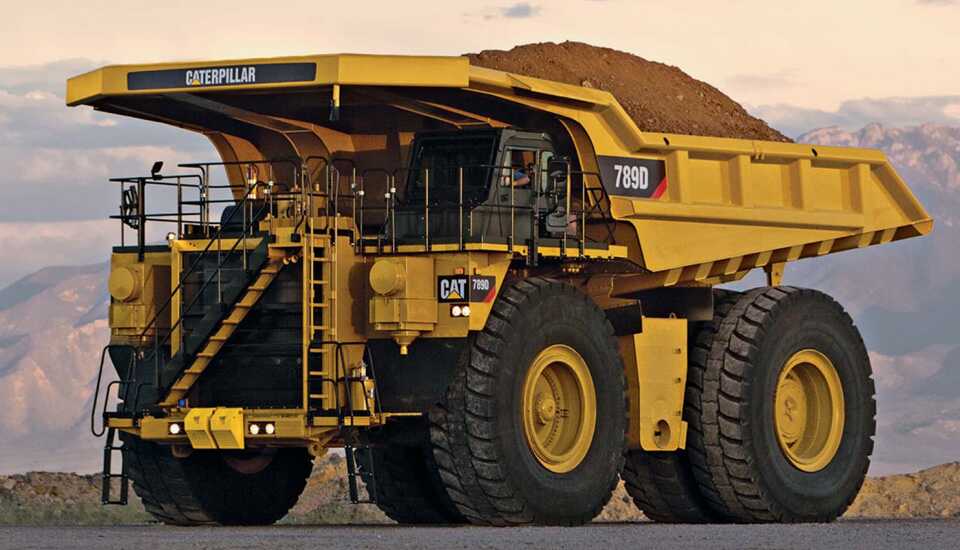Caterpillar: Will The Rally Resume?
Caterpillar (CAT) is a manufacturer with a large presence in multiple industries.
The company can be considered an agriculture stock because many of its machines are used in the farming industry. But Caterpillar goes beyond agriculture…

The company breaks its operations down into 3 broad segments:
- Construction Industries
- Resource Industries
- Energy & Transportation
Caterpillar’s diversification has not disappointed over the last few years. In fact, the stock has rallied 150% since early 2016 but has remained range-bound this year.
In addition, while it is expected to post record earnings this and next year, it is trading at a markedly low P/E ratio. Therefore, the big question is whether the stock will resume its rally.
Business performance
Caterpillar is enjoying strong momentum in all its segments. The strongest tailwinds are the trends observed in the construction segment in North America and China and the onshore oil and gas activity in North America. The company grew its revenues by 24% in Q2 and almost doubled its earnings per share. In addition, management significantly raised its guidance for the adjusted earnings per share of this year, from $10.25-$11.25 to $11.00-$12.00. As there are absolutely no signs of fatigue in its business momentum, Caterpillar is poised to achieve all-time high earnings per share this and next year.
Valuation
Given the exciting momentum of the company, some investors are surprised that the stock is trading at a markedly low P/E ratio of 13.2. This P/E ratio is far lower than the average of the market and seems too low for a stock that is on track to achieve record earnings next year.
However, investors should realize that Caterpillar is a highly cyclical stock due to the nature of its customers. The performance of the company greatly depends on the prevailing economic growth and the trend in commodity prices. As a result, its performance record has been remarkably volatile. To be sure, its earnings per share plunged 75% in the Great Recession and 46% in the recent downturn of the oil market. As a recession has not shown up for nine consecutive years in the U.S., this risk factor should not be underestimated, particularly given the rising interest rates, which tend to reduce the total amount invested in the economy.
Moreover, it is critical to realize that it is extremely hard to identify the correct entry point in cyclical stocks. These stocks tend to trade at extremely high P/E ratios near the bottom of their cycle and thus appear overvalued near their bottom. Conversely, they tend to trade at very low P/E ratios near the peak of their cycle and thus appear particularly attractive near their peak. This behavior of cyclical stocks has led Peter Lynch, the legendary investor, to claim that the fastest way to lose half of the capital in a short period is to purchase a cyclical stock at a low P/E ratio. To cut a long story short, investors should be especially careful before purchasing cyclical stocks at a P/E ratio that seems abnormally low.
On the one hand, Caterpillar has exhibited impressive performance in the last two years, as it has beaten the analysts’ estimates by a wide margin for nine consecutive quarters. In addition, the main growth drivers of the company, namely the construction and the oil industry, do not reveal any signs of fatigue. Consequently, Caterpillar does not seem to be close to the peak of its cycle right now. On the other hand, the magnitude of the positive surprise shrank in the latest earnings report. This may be a sign that the company is approaching its limits in positive surprises and hence it has limited potential to keep surprising the market and thus provide fuel to its stock price.
Final thoughts
Caterpillar is enjoying strong momentum in all its segments and is thus expected to post record earnings this and next year. As there are no signs of fatigue and the stock has a reasonable valuation, it is likely to offer decent returns to its shareholders in the absence of a recession. On the other hand, as this is a highly cyclical stock, investors should be aware of its significant downside risk in the event of a deceleration of the U.S. economy or the onshore oil industry. Only those who have great confidence in the sustained growth of the U.S. economy and the onshore oil industry should attempt to purchase the stock at its current level. Even these investors should remember that highly cyclical stocks are not buy-and-hold stocks. Overall, we believe that most of the easy money has been made on Caterpillar, which carries a significant amount of risk and thus should not be viewed as a bargain.
Disclaimer: Sure Dividend is published as an information service. It includes opinions as to buying, selling and holding various stocks and other securities. However, the publishers of Sure ...
more



Expect good things from $CAT!